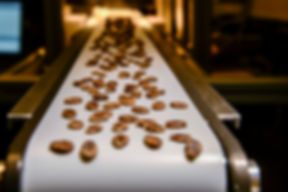
.png)
TECHNOLOGY
Introduction
When light (radiometric energy) is projected on to a physical object, it is vibration and stretching of chemical bonds, both on the surface and inside objects. Different objects will vibrate and stretch in unique ways - explaining why objects "look different" to the human eye. But human eyes can't accurately distinguish subtle differences in color (reflectance of objects) - but advanced cameras can!
In the image of melon seeds - one is hollow (no germ), while the other seeds have fully developed germ. Only highly trained people can distinguish seeds with/without fully developed germ, and the process is time-consuming. But high-resolution spectral data (reflectance profiles) show clear differences, so that specific "spectral features" can be used to in machine learning algorithms to classify melon seeds quickly, accurately, and non-destructively. Furthermore, the classification and sorting process can be automated.
"Hyperspectral imaging" implies that we use imaging sensors that collect reflectance data in hundreds of narrow spectral bands across a wide range of wavelengths. For comparison, a normal camera has only three wide spectral bands (RGB - the visible spectrum dividied into three ranges, red, green, and blue), so each pixel only has three reflectance values. The high spectral resolution of hyperspectral imaging data enables Spectral Analytix to develop optical solutions with very high accuracy - even when objects are indistinguishable by the human eye.

Hyperspectral imaging data are acquired under highly controlled lighting on a conveyor belt.
Melon Seeds

Spectral Analytix Inc. is specializing in use of optical sensing technology to provide customized sorting and classification solutions of crop seeds and insects.